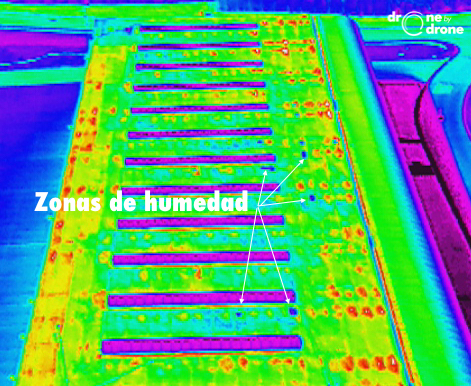Drone by Drone performs thermography work using drones. This powerful aerial tool makes it possible to inspect roofs in large industrial buildings. Drone-enhanced thermographic cameras are the perfect tool to evaluate the condition of the covers, offering a quick and inexpensive solution to inspect decks in industrial facilities.
The drones equipped with thermographic cameras allow to reduce the costs of the inspections against the traditional means like vertical works or the assembly of scaffolds.
The aerial images in the thermal spectrum make it possible to supervise the structure or construction in its entirety, from a privileged point of view in order to be able to inspect each part of the element.
In the case of flat roofs of industrial buildings, a small construction defect, inadequate maintenance or premature aging of the building materials due to atmospheric pollution or meteorological phenomena can cause water leakage or poor thermal sealing of the building. Water stored on the building roof adversely affects the durability of insulation materials, as well as causing uncomfortable leaks.
The difference in temperature between wet areas and correctly sealed (dry) areas allows the identification and location of them by means of thermographic cameras.
Inspections by means of drones and thermographic cameras thus allow the identification and location of pathologies that present the presence of humidity on the deck, allowing maintenance technicians to design corrective actions in a fast and economical way.
Drone by Drone through its large fleet of drones enables this type of work, as it counts among its arsenal with thermographic cameras, such as the new radiometric FLIR XT able to be adapted perfectly to the DJI Inspire 1 and Matrice 600 drones that the drone operating company owns.
As an example, an inspection carried out on an industrial roof, in which areas with a presence of moisture and poor thermal insulation can be appreciated, which makes the installation very energy-efficient.


